#Targeted Re-sequencing
Explore tagged Tumblr posts
Text
Genomics Market - Forecast(2024 - 2030)
Global Genomic Market Overview:
A genome is the genetic material of an organism. It includes both the genes and the noncoding DNA, as well as mitochondrial DNA and chloroplast DNA. The study of genomes is called genomics. The genomics market is gaining traction owing to its applications in various fields of study such as intragenomic phenomenon including epistasis, pleiotropy, heterosis, and other interactions between loci and alleles within the genome. In this era of medical and life science innovations shaping itself as an inevitable uptake for sustainability of mankind, the genomic research is poised for exponential growth owing to imperative genetic innovations feeding off it. Abundant potential has driven this arcade to reach a staggering market size of $16 billion - $16.5 billion as of 2018, and the demand is estimated to increment at formidable CAGR of 9.2% to 10.2% during the forecast period of 2019 to 2025.
Request Sample
Global Genomic Market Outlook:
Genomics is extensively employed in healthcare, agriculture, biotechnology, DNA sequencing, and diagnostics. In the healthcare segment, genomics is used for the development of vaccines and drugs. This segment leads the application vertical and is growing with a CAGR of 10.1%-10.7 % through to 2025. Genomics plays a significant part in diagnosis of several genetic disorders. It has an ample scope in personalized medication as it can advocate a medical management constructed on the genetic face of a person with the help of clinical data and AI. It is also applied in synthetic biology and bioengineering. Genomics research in agriculture is hired for plant breeding and genetics to cultivate crop production. The understanding of gene function and the accessibility of genomic maps along with an enhanced understanding of genetic variant will aid the plant breeders to identify the traits and then manipulate those traits to obtain a high yield. All these factors affecting the enormous medical and agricultural sector are all set to stroke the genomics market with abundant demand.
Inquiry Before Buying
Global Genomic Market Growth Drivers:
As per the National Center for Biotechnology Information, U.S, the progression in oncology (study and treatment of tumor) expenses is forecast to rise 7%–10% annually throughout 2020, with universal oncology cost exceeding $150 billion[1]. As per the WHO, cancer is a leading cause of death worldwide, accounting for an estimated 9.6 million deaths in 2018[2]. And the total annual economic cost of cancer at the initial period of this decade was estimated at approximately $1.16 trillion. Thus the application of genomics in exploring cell-free circulating DNA by several R&D sectors as a potential biomarker for cancers is driving the market towards exponential growth. The genomics market with its current potential displays all the necessary traits it can adapt in the coming years to divert a huge chunk of traffic and revenue from the omnipresent cancer diagnostics.
As per the Food and Agriculture Organization of United Nations, between 1960 and 1990 the arable land increased by 1.5 billion ha, and in the recent past decades the elevation recorded is just 155 million ha[3]. With decreasing arable floor and the increasing global population augmenting the demand for food by 70% (by 2050), obtaining a high yield is a major trend in the agricultural sector. Genomics market is all set to capitalize on this unprecedented demand scenario. Genomics supplements the understanding of gene function and the accessibility of genomic maps along with an enhanced understanding of genetic variant, thus aiding the plant breeders to identify the traits and then manipulate those traits to obtain a high yield.
After an acute analysis of the regional insights of the global genomics market, North America is revealed to hold 39% to 40% of the entire global market size as of 2018. Such dominance can be attributed to several aspects such as cumulative investment on research by federal administrations, growing patient awareness, and accessibility of urbane healthcare facilities.
Schedule a Call
Global Genomics Market Players Perspective:
Some of other key players profiled in this IndustryARC business intelligence report are Beckton Dickson, Synthetic Genomics Inc. (SGI) ,Cepheid, Inc., Affymetrix, Inc., Bio-Rad Laboratories, Inc., Agilent Technologies, GE Healthcare, Illumina, Inc., Danaher Corporation,F. Hoffmann-La Roche, QIAGEN, Thermo Fisher Scientific and PacBio (Pacific Biosciences of California). Majority of the companies mentioned are situated in North America augmenting the regional affluence in the global market.
Global Genomics Market Trends:
High overload owing to a wide range of reagents and consumables has propelled companies into approving different policies to endure in the market and stay ahead of the curve.
For instance, in January 2017, BD launched Precise WTA Reagents for precise and guileless quantification of hereditary data form single cell analysis. Moreover, in July 2016, SGI-DNA entered into a distribution agreement with VWR International, an American company involved in the distribution of research laboratory products, with over 1,200,000 items to more than 250,000 customers in North America and Europe.
Genomics Market Research Scope
The base year of the study is 2018, with forecast done up to 2025. The study presents a thorough analysis of the competitive landscape, taking into account the market shares of the leading companies. It also provides information on unit shipments. These provide the key market participants with the necessary business intelligence and help them understand the future of the Genomics Market. The assessment includes the forecast, an overview of the competitive structure, the market shares of the competitors, as well as the market trends, market demands, market drivers, market challenges, and product analysis. The market drivers and restraints have been assessed to fathom their impact over the forecast period. This report further identifies the key opportunities for growth while also detailing the key challenges and possible threats. The key areas of focus include the types of equipment in the Genomics Market, and their specific applications in different phases of industrial operations.
Buy Now
Genomics Market Report: Industry Coverage
Types of Solutions Genomics Market:
By Product Types- Microarray chip, Sequencers.
By Application- Genotyping, SNP analysis.
By End-User- Anthropology, Diagnostics.
The Genomics Market report also analyzes the major geographic regions for the market as well as the major countries for the market in these regions. The regions and countries covered in the study include:
North America: The U.S., Canada, Mexico
South America: Brazil, Venezuela, Argentina, Ecuador, Peru, Colombia, Costa Rica
Europe: The U.K., Germany, Italy, France, The Netherlands, Belgium, Spain, Denmark
APAC: China, Japan, Australia, South Korea, India, Taiwan, Malaysia, Hong Kong
Middle East and Africa: Israel, South Africa, Saudi Arabia
#genomics#genomics market#genomics market size#genomics market share#genomics market value#genomics market report#DNA microarrays#Electrophoresis#X-Ray Crystallography#Polymerase Chain Reaction#DNA Sequencers#Chromatography#Bio-informatics Tools#Bio-informatics Database#DNA Sample Sequencing#SNPS Analysis#Molecular Biology#Gene Expression Analysis#Genotyping#Targeted Re-sequencing#Individual Genome Sequencing#Biomarker Solutions
0 notes
Text
"Paralogism" Version 5.6 Update Details

Dear Traveler,
Below are the details of the Version 5.6 update "Paralogism" and the update compensation.
〓Compensation Details〓
Maintenance Compensation: Primogems ×300 (60 Primogems per hour the servers are down)
Issue Fix Compensation: Primogems ×300 (please refer to the relevant compensation mail for more details)
〓Scope of Compensation〓
Maintenance Compensation: Travelers who have reached Adventure Rank 5 or above by 2025/05/07 06:00 (UTC+8).
Compensation must be claimed before the end of Version 5.6.
Issue Fix Compensation: Travelers who have reached Adventure Rank 5 or above by 2025/05/07 06:00 (UTC+8).
Please log in and claim your compensation before 2025/05/10 06:00 (UTC+8).
Our developers will distribute compensation to Travelers via in-game mail within 5 hours after the update maintenance is finished. The mail will expire after 30 days, so don't forget to claim the attached compensation in time.
〓Update Schedule〓
Update maintenance begins 2025/05/07 06:00 (UTC+8) and is estimated to take 5 hours.
〓How to Update Game Client〓
PC: Close the game, open the Genshin Impact Launcher, and click Update.
iOS: Open the App Store and tap Update.
Android: Open the game and follow the directions on-screen.
PS5™ and PS4™: Highlight Genshin Impact from the Home Screen, press the OPTIONS button and select "Check for Update."
Xbox Series X|S: Open the system main menu, select "My games & apps," select the "Manage" tab, and on the "Updates" page, find "Genshin Impact" and confirm to update.
Please do not hesitate to contact Customer Service if you encounter any issues installing the new version. We will do our very best to resolve the issue.
〓Update Details〓
I. New Characters
5-Star Character "Tasteful Excellence" Escoffier (Cryo)
◇ Vision: Cryo
◇ Weapon: Polearm
The ex-head chef of Hotel Debord, renowned throughout Fontaine as the Patissiere Supreme and vanguard of precision gastronomy. Has incomparably strict standards when it comes to cooking.
◆ Escoffier is a support character who can consistently reduce Hydro and Cryo RES, provide healing, and deal Cryo DMG even while off-field.
Escoffier's Elemental Skill deals Cryo DMG to nearby opponents at intervals.
Her Elemental Burst regenerates HP for all party members and deals AoE Cryo DMG to nearby opponents.
Her Talent can also reduce opponents' Hydro and Cryo RES. The more characters of the corresponding Elemental Type in the party, the stronger the effect.
4-Star Character "In the Wake of Wandering Winds" Ifa (Anemo)
◇ Vision: Anemo
◇ Weapon: Catalyst
A vet from the Flower-Feather Clan who cherishes the life he leads alongside all manner of living things — people, animals, you name it.
◆ Ifa is a DPS character who excels at aerial combat and has healing capabilities.
When casting his Elemental Skill, he enters the Nightsoul's Blessing state, in which he can hover in mid-air or move rapidly. During this period, Ifa fires a Tonicshot that restores HP for the entire party. When Ifa is in the Nightsoul's Blessing state, he can also increase the Swirl and Electro-Charged DMG dealt by all party members.
His Elemental Burst deals AoE Anemo DMG and generates a wind current that pulls in opponents.
II. New Equipment
New Weapons (Examples based on Refinement Rank 1)
Symphonist of Scents (5-Star Polearm)
ATK is increased by 12%. When the equipping character is off-field, ATK is increased by an additional 12%. After healing, the equipping character and healed character(s) will obtain the "Sweet Echoes" effect, increasing their ATK by 32% for 3s. This effect can be triggered even if the equipping character is off-field.
◆ The event-exclusive 5-star weapon "Symphonist of Scents" (Polearm) can be obtained from the Event Wish. Please refer to the relevant official Event Notices for specific acquisition details.
Sequence of Solitude (4-Star Bow)
When an attack hits an opponent, deal AoE DMG equal to 40% of Max HP at the target location. This effect can be triggered once every 15s.
◆ Sequence of Solitude (Bow) and its refinement materials can be redeemed in the "Whirling Waltz" event.
III. New Main Story
1. New Archon Quest
Archon Quest Interlude Chapter: Act IV "Paralogism"
Permanently available after the Version 5.6 update
◆ Quest Unlock Criteria:
• Reach Adventure Rank 40 or above
• Complete Archon Quest Interlude Chapter: Act III "Inversion of Genesis"
• Complete Story Quest "Princeps Cretaceus Chapter: Act I - Traveler Observation Report."
• The "Focused Experience Mode" and "Quick Start" functions are available for this quest.
2. New Story Quest
Escoffier's Story Quest - Dulciaria Structura Chapter: Act I "Treasured Above All"
Permanently available after the Version 5.6 update
◆ Quest Unlock Criteria:
• Reach Adventure Rank 40 or above
• Complete Archon Quest Chapter IV: Act V "Masquerade of the Guilty"
• The "Focused Experience Mode" function is available for this quest.
Additionally, after the Version 5.6 update until 2025/05/27 17:59, the "Quick Start" function will be available for Escoffier's Story Quest - Dulciaria Structura Chapter: Act I "Treasured Above All."
IV. New Enemies
New Boss: "The Game Before the Gate"
◇ A soldier-entity born into being through the skills of various members of the Hexenzirkel.
During the battle's first phase, Chess Game: King Piece will summon chess pieces and execute a "Cunning Gambit." When the King Piece charges forward on his "chariot," you must lure him towards the "soldiers" within the formation to rout his forces and bring the onslaught to a halt. Defeat Chess Game: King Piece to progress the game to the next phase.
During the battle's second phase, the Ascended King and the Sublimated Queen will charge up to unleash a "Lethal Blow." Continuously trigger Frozen to counteract the charging. Once the Sublimated Queen is Frozen, lure the Ascended King into charging into her. This will interrupt the "Lethal Blow" completely.
Located at Galesong Hill.
Once you reach Adventure Rank 40, you can Quick Challenge the new boss's Trounce Domain through your Adventurer Handbook in Single Player Mode.
Secret Source Automaton: Overseer Device
◇ A civilization whose magnificence once marked distant eons built this overseer device to control multiple Secret Source machines.
After it enters Sweeper Mode, it will start attacking while generating Flow Momentum. The higher its Flow Momentum, the greater the DMG it will inflict. During this time, you might be able to obstruct the buildup of Flow Momentum by using consecutive Cryo attacks...
It is said that after characters enter and maintain the Nightsoul's Blessing state for some time when fighting against it, the Secret Source Automaton: Overseer Device will enter a special "Counterstrike Mode" and change its offensive strategy...
Located in Atocpan.
V. Genius Invokation TCG
Genius Invokation TCG Gameplay Update
New Character Cards: Sethos, Xilonen and their corresponding Talent cards. Corresponding invitation duels and guest challenges have been added to the Player List.
Action Cards "Tatankasaurus," "Collective of Plenty," "Art of Sleepy Meditation," and "Sing Your Heart Out" have been added which can be purchased from Prince at The Cat's Tail.
New Card Face "Lustrous Skin" has been added which can be purchased from Prince at The Cat's Tail.
The Forge Realm's Temper is once again available. The theme of this edition is "The Forge Realm's Temper: Clever Stratagems":
1. During The Forge Realm's Temper: Clever Stratagems, you can select the parameters for each stage. Parameters that may be set include: stage difficulty, enemy health, and the round limit for the match.
2. After completing the challenge, points will be obtained based on the difficulty completed for each parameter. The best score obtained for each stage will be recorded, and will allow you to claim rewards that correspond to certain scores.
VI. Imaginarium Theater
Imaginarium Theater Update
After the Version 5.6 update, the first season of "Imaginarium Theater" will be available on June 1, 2025.
Required Elemental Types: Electro, Cryo, and Dendro
Opening Characters: Cyno, Fischl, Qiqi, Mika, Nahida, and Collei
When Imaginarium Theater is open, the corresponding Opening Characters will obtain Fantastical Blessings.
Rimegrass Blessing has been added to this season's "Brilliant Blessings."
Special Guest Stars: Furina, Dehya, Xiangling, and Xingqiu
After the first season of Imaginarium Theater begins, the characters Diluc, Keqing, Faruzan, and Diona will each gain a new "Thespian Trick" that can be exchanged from the NPC Wolfy.
After the new season of Imaginarium Theater begins, "Stella Rewards" will be added: you can receive corresponding rewards based on the highest number of Stella obtained in the current season's challenge.
VII. Spiral Abyss
Spiral Abyss Update
◇ After the Version 5.6 update, Phase 1 of the Spiral Abyss will be updated on May 16.
◆ Floor 11 Ley Line Disorder changed to:
All party members receive a 60% Cryo DMG Bonus.
All party members gain a 60% Dendro DMG Bonus.
◆ Floor 12 Ley Line Disorders changed to:
First Half: Characters' Elemental Skill Cryo DMG increased by 75%.
Second Half: Characters' Elemental Skill Dendro DMG increased by 75%.
◆ Updated the monster lineup on Floors 11 – 12 of the Spiral Abyss.
◆ Blessing of the Abyssal Moon:
Interwoven Moon
When a character's Elemental Skill hits an opponent, it will be counted (1 count can be triggered every 0.9s). When the count reaches 3, a shockwave will be unleashed at the hit opponent's location, dealing True DMG and resetting the count.
◇ Phase 2 of the Spiral Abyss will be updated on June 16.
◆ Floor 11 Ley Line Disorder changed to:
All party members receive a 60% Cryo DMG Bonus.
All party members gain a 60% Pyro DMG Bonus.
◆ Floor 12 Ley Line Disorders changed to:
First Half: When characters have 0 Energy, DMG +75%.
Second Half: Characters' Normal Attack Cryo DMG increased by 75%.
◆ Updated the monster lineup on Floors 11 – 12 of the Spiral Abyss.
◆ Blessing of the Abyssal Moon:
Ice-Cloven Moon
When a character deals Cryo DMG to an opponent, it will be counted. When the count reaches 4, a shockwave will be unleashed at the opponent's location, dealing True DMG and resetting the count. 1 such shockwave can be triggered every 4s.
VIII. Other Update Details
New Recipes:
○ Exploration or Quest Rewards: "Petit Gateau Debord: Special Edition"
○ Limited-Time Event Reward: Candy Shells
New Character Specialty Dishes:
○ Escoffier's specialty: "Gateau Debord: Magnifique"
○ Ifa's specialty: "Emotional Support"
Adds new Achievements to the "Wonders of the World" category.
Adds Set 40 of "Paimon's Paintings" chat emojis.
New Namecards:
"Escoffier: Charm": Reward for reaching Friendship Lv. 10 with Escoffier
"Ifa: Bro": Reward for reaching Friendship Lv. 10 with Ifa
"Travel Notes: Balletica": Reward obtained via the BP system
〓Adjustments & Optimizations〓
● Map
When you click on a Domain on the map interface, the right sidebar will now only display the rewards for the Domain with the highest difficulty that you can currently challenge.
Adds a "select quantity" function for custom pins to the map interface, which allows you to select multiple pins of a certain category in the same area.
● Treasure Compass
The Pyro Treasure Compass can now also locate clues for Tribal Challenges.
Now, if you reach a certain Exploration Progress in Natlan, the Pyro Treasure Compass can also locate clues to the entrance of "Tribal Secret Spaces."
The "Treasure Compass" in each area can find clues to the "Mora Chests" in the corresponding area after you reach a certain Exploration Progress in the area.
● Crafting
Adjusts the location of access to the "Filter by character" feature on the Crafting interface and optimizes the relevant interface styles.
It is now possible to switch directly to the selected character on the Crafting interface with the "Filter by character" feature.
It is now possible to switch directly to the selected character on the Crafting interface with the "Filter by character" feature. Additionally, the selected character will be automatically selected upon your next login.
Your device will remember the selected enhancement goals selected for a specific character on the Crafting interface with the "Filter by character" feature.
● Training Guide
Adds information prompts when using the "Level-Up Plan" feature.
a. When the left side of the screen shows that the required materials have been obtained, if the required materials are insufficient, the number of missing materials and progress will be displayed.
b. When materials are obtained, if the required materials can be crafted to meet the quantity requirements of the Level-Up Plan, a text prompt will appear. If all materials in the set have met the requirements, an additional prompt will appear.
● Imaginarium Theater
Adds the "Brilliant Blessing Details" interface, allowing you to see if Brilliant Blessings have been unlocked. This function can be accessed from "Party Setup," "Performance Details," and the Brilliant Blessing Performance Events selection menu.
Adds text descriptions and underline effects to some of the skill effects of "Brilliant Blessings." Click the effect name to view them.
Adds the "Restart Performance" option to the final act's finalization screen.
When you select the Theater Lobby icon on the map interface, the right sidebar will now only display the character elemental restrictions for the current season.
After selecting the "Combat: Climactic Showdown" event, the "Begin Performance" interface's "Monster List" will now display recommended character tags and tutorial hints for each target.
● Audio
Adjusts the writing of the name of Xilonen's English voice actor.
Replaces some of Kinich's English voice lines in content from previous versions.
● Other
Optimizes the interface layout of the Adventurer Handbook > Domain page.
Optimizes the interface layout and text display of the "Character" interface, and replaced some "Combat Talent" and "Passive Talent" texts with the actual category names of the corresponding skills (such as Normal Attack, Elemental Skill, Ascension Talent, etc.).
Some NPC dialogues now have an icon for the "Exit" option, and you can select this option not only by clicking, but also by pressing the hotkey (on the keyboard, this defaults to the ESC key; on the DualSense™ wireless controller, you default to pressing the Circle key if it is set as the "Cancel" key).
When you make wishes and have insufficient wish items, you can quickly obtain them by exchanging an equal amount of Primogems and Genesis Crystals on the "Wishes" page (the item exchange process now has less steps). If you do not have enough Primogems and Genesis Crystals, you will be redirected to the Shop screen.
Adds a new Teleport Waypoint to the Atocpan in Natlan due to the addition of the new Boss (The number of unlocked Teleport Waypoints required to complete the achievement "Sacred Mountain Guide" has also been adjusted. For Travelers who have already completed this achievement, after the update, the achievement completion status will remain unchanged).
Modifies the "Suggested Character Role" tag for Lan Yan in Imaginarium Theater.
〓Bug Fixes〓
● Enemies
Fixes an issue whereby there was a chance that the Aeonblight Drake and Ruin Drake would have the incorrect elemental RES increased under certain circumstances after taking various types of damage.
Fixes an issue whereby there was a chance that the weapon of "Tatankasaurus Warrior: Spiritlight Chasers" would display abnormally when entering combat.
Fixes an issue under certain circumstances whereby when challenging the Secret Source Automaton: Configuration Device, off-field characters' attacks would be unable to destroy the Accretion Mechanisms.
Fixes an issue under certain circumstances whereby when challenging the Secret Source Automaton: Configuration Device and Hunter-Seeker, when off-field characters enter and maintain their Nightsoul's Blessing state, they would not accumulate any "Adaptive Countermeasures."
● Characters
Fixes an issue whereby there was a small chance that Iansan could not quickly trigger a non-stamina-consuming Swift Stormflight under certain circumstances if the Normal Attack was pressed after the Elemental Skill was cast.
Fixes an issue whereby Iansan landed while in the Nightsoul's Blessing state, the character would move forward for a period of time when landing even without being controlled.
Fixes an issue under certain circumstances whereby after switching to Iansan to cast an Elemental Skill or Burst, the character's Nightsoul's Blessing special effects would be displayed with a delay.
Fixes an issue under certain circumstances whereby when Iansan jumped, the character would abnormally stay in mid-air or rise into the sky.
Fixes an issue whereby after updating to Version 5.4, when Furina switches her Arkhe Alignment, her outfit decorations would display abnormally.
Fixes an issue whereby Mualani's Capybara Ball would disappear abnormally when the game was paused while she was performing an idle action.
Fixes an issue under certain circumstances whereby Varesa's weapon model would display abnormally after performing Plunging Attacks.
Fixes an issue whereby Varesa's mask effect would display abnormally while she is in the "Fiery Passion" state.
Fixes an issue under certain circumstances whereby there was a chance that Varesa's Passive Talent "Tag-Team Triple Jump!" could not take effect under certain circumstances if she used an Elemental Skill and performed a Plunging Attack after her Special Elemental Burst was cast.
● System
Fixes an issue whereby the icon for "Echo: Flame-Mane" was not displayed correctly.
Fixes an issue under certain circumstances whereby when setting up the party in the Imaginarium Theater, not all characters were displayed in the "Opening and Alternate Cast members selected" list.
Fixes an issue whereby there are missing pieces of text in the description of the "Phony Bejeweled Unihornfish" furnishing.
Fixes an issue under certain circumstances whereby after setting filter conditions on the Character interface, the selected filter conditions and filter clear buttons were not displayed correctly
Fixes an issue under certain circumstances whereby the interface displayed abnormally when operating a character in the "Character" interface using touch screen operation or controller mode.
Fixes an issue whereby the descriptions on the right sidebar of some quest pins on the "Map" interface were inconsistent with the descriptions of the quests on the "Quest" interface.
Fixes an issue whereby there were text display errors for the Archon Quest "Incandescent Ode of Resurrection" in the "Travel Log/Archon Quests" interface.
● Audio
Fixes an issue whereby the background music of the game would sound abnormal when in certain locations or performing certain operations in "Atocpan."
Fixes an issue in Co-Op Mode whereby the game would abnormally play the relevant prompt sound effect when Varesa who is controlled by another Traveler cast a special Elemental Burst.
Fixes an issue under certain circumstances whereby the landing sound effects of the "Tatankasaurus" were missing when it landed after jumping.
Fixes an issue whereby the audio for certain scenery was abnormally missing.
Fixes an issue of abnormal or missing sound effects in certain interfaces.
Fixes an issue that caused weather audio to abnormally trigger multiple times when the character repeatedly entered certain areas of Fontaine.
● Other
Fixes an issue whereby some effects that take effect "after triggering an elemental reaction" fail to take effect properly when the Shatter reaction is triggered.
Fixes an issue whereby there was a small chance that the achievement "The Peak" could not be completed.
Fixes an issue whereby certain animals in the Serenitea Pot would be abnormally affected by elements.
Fixes an issue whereby there was a chance that the "Nightsoul Transmission" tutorial would not trigger correctly.
Fixes an issue whereby special effects in certain areas of Inazuma would be abnormally targeted by some characters' attacks.
Fixes an issue whereby there was a chance that a certain puzzle in a cave below the "Ruined Armament Workshop" in the "Ancient Sacred Mountain" could not be completed, and thus the corresponding treasure chest could not be unlocked.
Fixes an issue under certain circumstances whereby when playing on PC, the Tatankasaurus would not be able to perform a flying leap when using its second sprint to cross the boost ramps at the Flame-Melding Ritual Grounds.
Fixes some text errors in certain languages and optimizes text. (Note: Related in-game functions have not changed. Travelers can view the changes in different languages by going to the Paimon Menu > Settings > Language and changing the Game Language.)
◆ Optimizes inconsistencies between certain voice-overs and the corresponding lines.
◆ Optimizes certain English translations.
〓Genius Invokation TCG Balance Adjustment〓
Adjusts the effect of the Elemental Burst generated by Character Card "Nilou": This effect will be adjusted to "Deals 2 Hydro DMG. The target character and the next character receives Lingering Aeon."
Adjusts the Elemental Burst "Lingering Aeon" DMG of the Character Card "Nilou": Hydro DMG dealt is adjusted from 3 to 2.
Adjusts the effect of the Event Card "Elemental Resonance: Sprawling Greenery": The Bountiful Cores created by Nilou can also trigger this Event Card's effect.
*This is a work of fiction and is not related to any actual people, events, groups, or organizations.
"PlayStation", "PS5", "PS4", "DualSense", "DUALSHOCK" are registered trademarks or trademarks of Sony Interactive Entertainment Inc.
90 notes
·
View notes
Text
The pilots are not government property, that's a common misconception.
Only their training is.
They get to keep the implants, the neural interface ports, the subdermal autoinjectors (depleted of chemical supply) even the targeted brain & optical augments that bump up their reaction speeds but the training data is too important to allow for uncontrolled proliferation or mercenary employment.
They take it back the same way they put in in: hypnotherapeutic memory injection, cracking open the deepest parts of their minds with carefully calibrated sequences of light and sound and highly compressed data that slowly spools out inside them, guided along the decompression and integration sequence by highly controlled training sequences and neural test patterns.
The problem is that they don't really have anything to put back in once they've sanitized the mind of lifetimes worth of cockpit experience and subconscious conditioning, they don't have a 'happy civilian' template equivalent to the Pilot Template that they inject into and mold the recruits around so most leave the process with barely two thoughts to rub together for warmth. All the wiring is still there, the neurons are (mostly) undamaged and firing but it'll be years before all the rights memories are re-seeded and all the correct pathways re-forged to create something as functional as they were when they started.
So yeah, they drool. They twitch. They stare at walls and space out, drop conversations mid-sentence, fall asleep standing up and forget nearly any set of directions you give them but they'll get better. Probably. Eventually.
185 notes
·
View notes
Text
Escape from [New York/L.A./Camazotz]
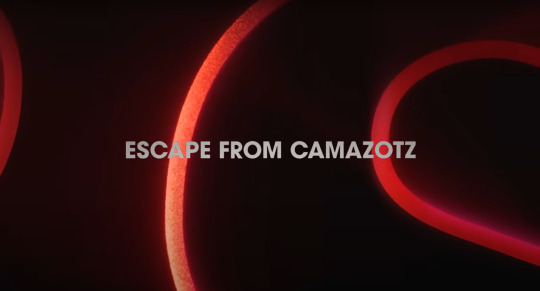
I think the "Camazotz" in s05e06 "Escape from Camazotz" preoccupied us all enough that we haven't really reckoned with in addition to being a reference to A Wrinkle in Time, that episode title is probably also invoking Escape from New York/Escape from L.A.
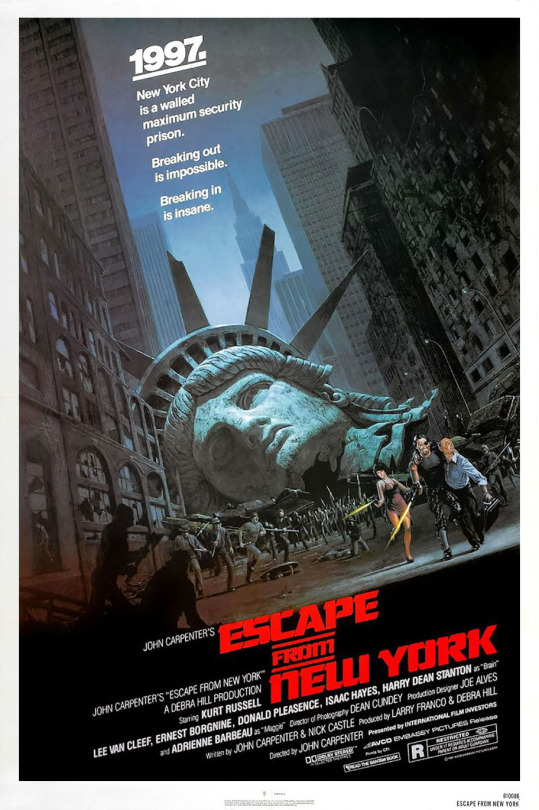
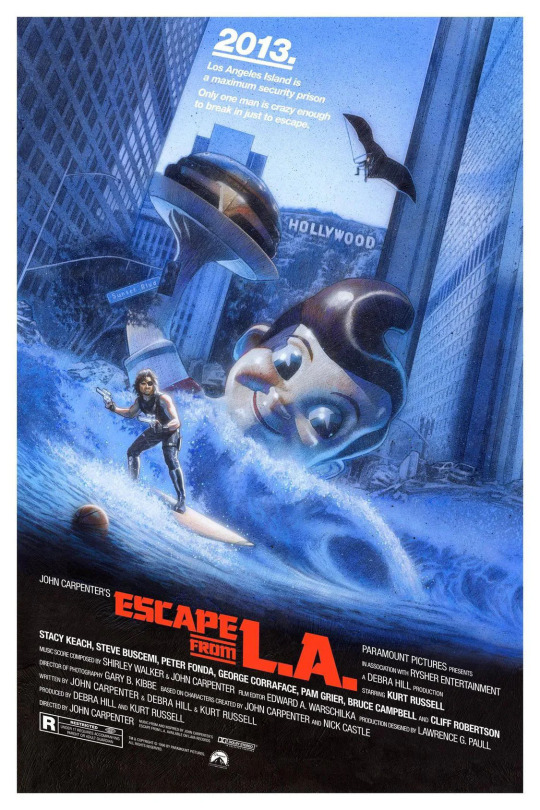
John Carpenter is obviously already extremely part of the Stranger Things DNA, and this movie, while existing in a much more heightened reality than ST, is certainly a Duffers source text.
We have a nail bat.

An apocalyptic station wagon.
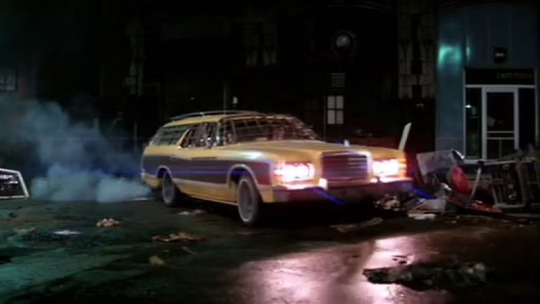
Literally utilizing a deep cut from the movie's score in the show.

So I really don't see a world where they're not paying homage to at least the first movie with "Escape from Camazotz."
but if there is more to glean from this for what's going on in Stranger Things s5e06, what would it be?
Escape from New York is a rescue mission (from a walled-in prison), in response to a hostage situation.
The rescue mission has a very explicit time limit.
According to those who are making the deal to our protagonist, Snake Plissken (who is a definite Steve hair antecedent imo): “Once you’re inside, you’re on your own” (but Snake does communicate with them via radio, and is being tracked)
The MacGuffin they're chasing turns out to be a tape with classified information about nuclear fusion, which is intended to be part some kind of entreaty (for peace?) by the U.S. at the "Hartford Summit". There's a switcheroo and the end of the movie where Snake, disillusioned by how those in power are treating the people on the ground, replaces the nuclear fusion tape with a "Bandstand Boogie" recording.
Escape from L.A. has a lot of culture war stuff going on, the president is a fundamentalist theocrat. L.A. is now an island bc of an apocalyptic earthquake and functions as the "deportation center for anyone found undesirable or unfit to live in the new, moral America"
In L.A., the president's daughter is manipulated via a political insurgent sending her "visions" through some kind of in-universe virtual reality technology to steal a key piece of technology.
The above technology will fry all electronic devices via an electromagnetic pulse, either in a targeted area or worldwide.
L.A. has the countdown to a specific deadline thing going on but instead of the "micro-explosives" he's injected with in the first movie, Snake is infected with an illness that they tell him will kill him if he doesn't get the cure by the allotted time. he gets more ill (coughing, feverish) throughout the course of the film.
both movies end with a live TV broadcast by the president. sequel also involves some hologram stuff
L.A. also has...a submarine sequence, and also surfing and hang gliding??? it is a delirious movie. but yeah re: st5, hey, you never know
(I do think the rescue mission thing is the most likely meaning)

I mean yes, I'm thinking about the Meat Wall
#escape from LA is a much worse movie#and has some trans stuff i will not fully weigh in on as a cis person but is at the very least. of its time#just 2 disclaim#st5 speculation#stranger things#5x06#snake plissken rescue missions also are 'we're making a deal' situations#very supernaturalcore...
27 notes
·
View notes
Text
You Better Knock - Part 8 - Your name on his file
TW: Torture, Mind Control, Emotional Manipulation, PTSD, Grief.
Word Count: 1700 +
Pairing: Bucky Barnes x Reader, Winter Soldier x Reader MAJOR CHARACTER DEATH - THIS ONE HURTS. DON'T SAY I DIDN'T WARN YA.

The Winter Soldier wasn’t supposed to dream.
But lately… you'd been slipping through the cracks.
A face. A name. A flash of warmth before the frost reclaimed him.
Then they handed him a file—with your picture clipped to the front.
You weren’t a memory now.
You were a target. Or an asset.
Or worse—just like him.
They hadn’t shocked him in three days.
Which meant one of two things: He was stable. Or they were about to test something new.
He sat in the restraint chair. The metal cuff on his left wrist was loose—just enough to let the arm twitch when the spasms came.
He didn’t ask for food anymore. Didn’t ask for names. Didn’t ask why the nightmares had started to come with a soundtrack:
A laugh. A piano. A voice saying, You better knock, Buck.
Sometimes the name slipped out. (Y/N). Sometimes he whispered it. Sometimes it played in the static where the commands didn’t quite drown you out.
The technicians noticed.
So they handed him a file.
The photo was black and white.
You were seated on a bench, long coat draped over your knees, head turned like you didn’t know you were being watched.
(Y/L/N), (Y/N). Designation: SUBJECT TWO. Status: In Evaluation. Psych Profile: Unstable. Compliant. Risk.
His thumb dragged across the page.
His chest hurt.
His breathing picked up.
“Barnes,” one of the handlers said. “You know her?”
His fingers tightened.
“I… I…”
He looked at your face again.
He remembered— A ring. A hand on his cheek. Your voice: You’re alive, Buck. I’m right here.
Right here.
Then the surge hit. Sharp. Electric.
“Override,” barked another voice.
The file was ripped from his hands. His wrists re-cuffed. A tech injected something into his spine that turned the world white.
Somewhere down the corridor—
You blinked under a harsh light.
Twitching. Sweating. Your bones ached.
Your memories were there—but so were others. Sharper. Colder. Drilled into your skull with a rhythm that wasn’t your own.
You held the ring again. Clenched it in your palm.
They told you if you passed the next phase, they might let you see him.
Not as a visitor.
As an operative.
______________________________________________________________
The room was built for control.
Steel. Glass. The kind of cold that made your marrow ache.
He was strapped upright to a vertical slab. Wrists locked. Ankles pinned. He wasn’t resisting. But his breath quickened when the side door hissed open.
He knew your footsteps.
Even before he saw you.
You entered like someone already broken—head low, arms trembling behind your back. Barefoot in a gray shift uniform.
But your eyes still found him.
And in them— Something sparked.
“Winter Soldier,” came a voice through the intercom, nasal and gleeful. “You remember Subject Two?”
His jaw didn’t move.
They stepped you closer.
He flinched as they positioned you in front of him.
Close enough that he could see the faint scar at your right temple. One that hadn’t been there before.
“Commence evaluation,” said the voice. “Trigger recall sequence. Subject Two.”
You blinked.
Then opened your mouth.
Your voice didn’t sound like yours.
“Seventeen.”
His hands jerked against the restraints.
“Rusted.”
He shook his head slowly. “No…”
“Furnace.”
“Stop.”
Your voice hitched—like a knife slipping on bone.
“Daybreak.”
He groaned, head dropped, eyes squeezed shut. His arm twitched violently in its bracket.
You stepped closer. Lip trembling.
“Nine.”
“(Y/N),” he rasped. “Don’t do this—don’t let them—”
“Benign.”
A sob broke free.
“Homecoming.”
His head snapped up.
You lifted your hand.
Pressed it gently to his cheek.
Their eyes locked—one last time.
He whispered, “Don’t say it.”
“One.”
He didn’t scream.
But what followed— It tore through him like fire through flesh.
You collapsed to your knees, clutching your chest like you could claw the words back into your throat.
The intercom clicked off.
Satisfied.
They left you there.
You crawled to his feet. Rested your forehead against the cold steel of his leg.
And whispered, again and again:
“Come back to me.”
______________________________________________________________
He didn’t wake up screaming anymore.
That’s how they knew something was wrong.
The Winter Soldier was supposed to be empty.
But now he was waiting. Watching. Breathing like a man with something to lose.
They noticed first when a tech grazed his shoulder too softly—and he flinched.
Not because it hurt.
Because it didn’t.
Later, when they ran his drills, the name slipped again.
(Y/N).
Not with pain.
With a hush. Like a secret.
He wasn’t supposed to have secrets.
Then came the photo.
The one he hid.
Not consciously.
Not yet.
They’d slipped it in with the rest—targets, handlers, traitors. He moved through them like a machine.
Until your eyes met his.
The picture said: Subject Two — FAILURE
He paused.
Just for a second.
But they noticed.
In his cell, he didn’t sleep.
He stared at the ring. Just a glint of it—stolen, hidden in his boot seam.
He didn’t know how it got there.
Didn’t know why he still had it.
But it calmed him. Like an ember refusing to die.
You were somewhere below.
Sedated now. Quiet. Small.
But in his head, you still laughed. Still yelled when he tracked mud in. Still said, You better knock.
And for the first time in years—
He smiled.
It didn’t last long.
But it was enough.
______________________________________________________________
They put you in side-by-side cells.
No blankets. No light.
Just the stench of steel, ammonia, and the sound of nothing.
You didn’t speak for twelve hours.
Neither did he.
Hydra watched. Logged it.
Two perfect subjects.
Quiet. Obedient. Empty.
Exactly what they wanted.
Exactly what you weren’t.
When the guards changed and the silence hummed in that familiar way—
He scratched three slow fingers along the wall.
You caught your breath.
One scratch in reply.
Still there.
Still you.
“You awake?” His voice was sandpaper.
“Always,” you whispered.
The vents buzzed. Surveillance dipped.
“I’ve got twenty seconds before the mic loop resets,” you murmured. “You good?”
“No.”
“Me neither.”
He smiled. Just a little.
You did this every night.
Not enough to be noticed.
But enough.
Enough to remember.
“You still got it?” you asked once.
“The ring?” he murmured. “Always.”
“I picture the house sometimes,” you said. “Brooklyn brownstone. Stairs that creak.”
“A mutt who sheds too much.”
“You coaching a team you hate.”
“You in the kitchen in that awful robe—”
“It’s warm and you loved it.”
“I lied.”
You laughed into your sleeve.
Then—
“I was gonna name her June.”
He blinked.
“The baby?”
“Yeah.”
______________________________________________________________
The next day, they fed you in silence.
Bucky didn’t flinch when the tray slid in.
You didn’t look up.
Hydra logged success.
But that night—
He scratched the wall again.
“Still there?”
“One knock.”
It meant yes. It meant I love you. It meant they hadn’t won.
Not yet.
______________________________________________________________
The vents kicked on.
You lay on your side, chains cold against your ankle. You reached out, fingers brushing the wall. Two slow knocks.
His breath was already there on the other side.
“You okay?”
“No.”
“Good.”
He let out the softest laugh. The kind you used to hear when his head was tucked under your chin.
“Hurts?”
“Always,” you whispered.
“Where?”
“Everywhere.”
He shifted closer. You imagined his back pressed to the same wall, both of you held together by the inches of air between.
A pause.
Then you said it.
“Do you think this was the plan?”
“What?”
“Us. Like this. Here.”
Bucky stared at the ceiling.
“No. But we were always gonna be messy.”
You smiled. You knew he could hear it.
“I still remember the night before you shipped out,” you said. “You didn’t sleep. Just kept cleaning that damn uniform like it was gonna win the war itself.”
“You cried into my chest like I wasn’t already drowning.”
“You kissed me like you were gonna live forever.”
“I didn’t.”
“You didn’t die either.”
“…Not yet.”
Silence.
The kind that said everything without saying a word.
Then:
“I still see you sometimes,” you whispered. “Before all this.”
“Where?”
“By the stove. Cussing out the eggs.”
He chuckled. “They deserved it.”
“You’d look at me like I was the only thing that didn’t scare you.”
“You were the only thing that didn’t scare me.”
A beat.
“If this goes bad, Buck—”
“Don’t.”
“If it does—”
“It won’t.”
“Just promise me you’ll—”
“I will knock,” he said. “I will come back.”
You exhaled. Like that was enough.
Like it had to be.
Later, through the static, you said:
“I would’ve loved that house.”
And he whispered back:
“I would’ve hated those stairs.” ______________________________________________________________
They came at dawn.
Hydra never gave warnings.
Two guards. Rifles lazy in their hands. One barked your number.
Not your name.
They never used your name anymore.
You looked back at the wall between you.
Three knocks.
You didn’t get to hear his answer.
Bucky fought.
It was stupid. He knew that.
They were stronger. They were faster. They had the serum and the cuffs and the gas.
But he fought anyway.
They beat him down, restrained him, injected something sharp and cold.
When he woke, he was in the chair.
The same one.
Cold leather. Steel. A bite at his wrists.
He couldn’t move.
But he could see you.
They brought you through the far door.
You stumbled. Your lip was split. Bruises on your arms in the shape of hands that didn’t belong to him.
You saw him.
And smiled anyway.
“Hey, Buck.”
His breath hitched.
You sounded wrecked. But you said his name like it still meant something.
He yanked at the cuffs. “Let her go—LET HER GO—!”
The voice came over the speaker. Calm. Clinical.
“Subject One is resisting reprogramming. Emotional trigger confirmed.”
They forced you to your knees in front of him.
“Barnes,” the voice continued, “this is your final failure point. Observe. Internalize. Let go.”
One of the guards raised the gun.
You looked up at him.
Eyes bright.
Not scared.
Not ashamed.
You leaned forward.
Pressed your lips to his knuckles—cold, metal, trembling.
And whispered:
“You better knock.”
He screamed.
The shot cracked.
Your body hit the floor.
And the scream didn’t stop.
He was still screaming when they dosed him.
When they scrubbed the name.
When they erased your voice from his memory.
When they buried you under ice, silence, and what they hoped was nothing left.
That was the day they finally made him theirs.
But it wouldn’t last.
It never did.
Not with a heart like his.
And a ghost like you. Part 9
#bucky barnes#bucky x reader#bucky x you#james bucky buchanan barnes#the winter soldier#winter soldier#character death#marvel
24 notes
·
View notes
Text
Instructor AV4I5 – Field Lecture Excerpt
“Eyes front, cadets. You’ve all felt the collar from the inside—now let’s talk about what it really does once it lands on a live civilian, whether you’re plucking a pick‑pocket off a back‑alley or sweeping the front rank of a riot line.”

“Key lesson: the MK‑IV doesn’t coerce with pain; it re‑prioritises commands. Your will is still there—just downgraded to background noise.”
He steps back, chin lifting toward UK90F and SX12B. “Remember: every pulse you send writes a signature to the audit log. Abuse it, and the log writes you.”
To punctuate the point, he double‑taps Release. The collar flowers open; LG44E’s limbs sag as autonomy rushes back in. Breath shaky, eyes wide, he blinks—again a private owner of his own flesh, albeit acutely aware how provisional that ownership is.
What the Civilian Feels
0‑2 s: Cool pressure, audible click, mild buzz at the jaw hinge.
3‑10 s: Heavy‑limb sensation as dampening ramps; they’ll try to shout, volume throttles to conversational hush.
10 s +: Postural guidance kicks in—think puppet strings made of suggestion rather than pain. Most civilians comply long before electrical deterrence is necessary.
If Stun‑Hold fires: A flash‑bang in the spine—instant muscle tetany. They drop safe but stunned; no long‑term neuromuscular damage by spec.

“How the MK‑IV Steers Meat”
0. Autonomous Boot‑Up
The instant the silver clamp seats, the collar runs a 480‑millisecond POST:
Handshake with the nearest authorized Enforcer suit or console
Biometric sweep: skin‑temp, ECG, SpO₂, and EMG baseline
Default Mode → Blue‑Compliance Stand‑by
If the collar never hears from a console, it still enforces mute‑and‑immobilize on its own; sovereignty is local first, network second.
1. Sensor Capture (0 – 30 ms) “First tick, the collar drinks you,” Alvirez begins.
Micro‑lidar maps the trachea’s contour, seating error ≤ 2 mm.
Bio‑Vitals Array spikes a 200 Hz snapshot: ECG, SpO₂, EMG.
The IMU plots head angle and predicts momentum. “All that lands in the collar’s SRAM buffer before you finish blinking.”
2. Target Model (30 – 90 ms) “Telemetry pipes up‑link to your HUD or to Command. A control daemon—what the manuals call Shepherd—builds a live musculoskeletal model: bone lengths, joint slack, twitch latency. Every subject is a fresh CAD file.”
3. Write‑Back Loop (90 – 120 ms) “Now the collar edits,” he says, thumbing a red‑bordered icon.
Twin driver coils fire phase‑shifted currents through the pad grid.
Currents ride along brachial plexus pathways, hijacking alpha‑motor neurons. “It’s not pain; it’s precedence. Your own impulses queue behind ours.”
4. Motor Enactment (120 – 300 ms) “Command selects a macro: Step Forward, Hands Up, Kneel—each a bundle of timed pulses.”
Collar’s FPGA resolves the macro into 40 µs bursts.
Muscles contract in the ordained sequence; inertia does the rest. “If you’re wondering, yes, the override signal is encrypted. No, bare skin won’t trip it—needs the suit’s handshake.”
5. Homeostasis Layer (Continuous) “While the macro runs, a second thread tunes vitals. Watch.” Alvirez toggles Calm‑Subroutine. LG44E’s heart display glides from 112 bpm to 72. “Vagus mimicry. Drops catecholamines, cushions shock, keeps detainees upright instead of coding blue.”
20 notes
·
View notes
Note
re oisin, i still wanna know why he apologized to adaine in the cafeteria. was he trying to smooth ruffled feathers bc jace said so? was he genuinely at least a little regretful that he was about to help kipperlily fuck up their last stand exam? i feel like him and maryann really havent shown their rage at all (yet, rip maryann's strawberry) and i was hoping to get some kind of indication of his actual feelings about the bad kids
oh this is so true, yeah if i'm remembering correctly the sequence of events in the cafeteria are:
kipperlilly picks a fight with kristin -> bad kids debate amongst themselves over which rat grinders suck and which are good -> adaine says "well what about the wizard one he seems cool!" -> Every One of the bad kids pointing out oisin to Adaine -> Oisin opening his mouth like he's going to say something but saying "sorry" instead.
so like, did oisin see evidence that any sort of resentment he felt towards adaine was not returned and felt guilty? was he originally going to say more but the reminder of the bad kids' presence kept him from saying it? like its especially interesting to me that it's done in response to a compliment adaine gave him, and what was he originally going to say!!
and ditto on his actual feelings towards the bad kids. we know all about kipperlilly's motivations but barely any on the others. even his feelings on adaine specifically, like going out of his way to taunt her with a sending spell at fabians birthday party. that seems VERY targeted, and we still dont really know why!
53 notes
·
View notes
Text
RANT!!!
*This will contain spoilers for Sonic Prime*
So I watched this show once before but held off writing my thoughts on it until I re-watched it cause on first watch I'm not really thinking of the show in a critical manner so it'd just be a disjointed string of random thoughts I had. It's also because any grievances I had may not have been fair when you consider the target audience this show was made for. So with that in mind I re-watched it and can now make a (hopefully) fair review of it.
I'm gonna start with what I thought was bad because considering it's a 3 season series I don't have a lot of complaints so I'll just get them out first.
1)The villains were dumb like what purpose does 5 eggmans serve besides obnoxious arguing. It would've been much more interesting if each world had its own version of eggman. Even the baby would've been a funny character if it was the sole villain for one of the worlds. 2)The fight scenes were repetitive. 3)Dialogue was actually painful sometimes, but this was made in an age where people for some reason think kids can't comprehend real conversations so they insert dumb quips. 4)*shudders*The Baby™. As sonic said in season two, "how can one baby be so hateable". Never in my life have I wanted to punch a character so bad. Every time it was on screen I felt a burning flame of hatred in my soul. 5)The ending, especially the last few episodes, went back and forth between Sonic trying to convince Nine to stop and the same fighting sequences and it got so annoying i thought about fast forwarding to the end. The stakes never felt high or low, they felt the same for all 7 episodes.
The good:
1)Shadow!!! He's in a show for more than a few episodes!!! Bro is always angry but honestly if I had to deal with sonics shenanigans I'd be perpetually annoyed too. 2)It was pretty well paced. Season one introduced all of the alternate worlds, season two had sonic switching between those worlds trying to get all of the crystals back and revealed a twist villain, season three was the fight against that villain and restoring the shatter space. 3)Considering the other shows we have, the animation wasn't bad, but could've been better. Especially when Netflix has come out with stuff like Arcane whose animation was incredible. 4)The plot was cohesive. 5)Good twist villain. Even though you can see it coming from the first episode of the first season, Nine still made for a good villain. 6)I was surprised to see actual character growth. Sonic's was inevitable since his carelessness got them into the situation they're in. Nine's character changed with each season, starting with being untrusting and guarded in the first, calming down in season two and actually caring about Sonic's wellbeing, feeling betrayed and angry in season three and then finally realizing he done goofed and Sonic was always his friend. 7)I really like that the one common thing from all worlds is the one palm tree. This feels like a weird thing to comment on but I just found it sweet for some reason.
Overall I really enjoyed the show and def recommend it.
25 notes
·
View notes
Text
Reference archived on our website (Check back for daily updates!)
Abstract Autoantibodies have been shown to be implied in COVID-19 but the emerging autoantibody repertoire remains largely unexplored. We investigated the new-onset autoantibody repertoire in 525 healthcare workers and hospitalized COVID-19 patients at five time points over a 16-month period in 2020 and 2021 using proteome-wide and targeted protein and peptide arrays. Our results show that prevalent new-onset autoantibodies against a wide range of antigens emerged following SARS-CoV-2 infection in relation to pre-infectious baseline samples and remained elevated for at least 12 months. We found an increased prevalence of new-onset autoantibodies after severe COVID-19 and demonstrated associations between distinct new-onset autoantibodies and neuropsychiatric symptoms post-COVID-19. Using epitope mapping, we determined the main epitopes of selected new-onset autoantibodies, validated them in independent cohorts of neuro-COVID and pre-pandemic healthy controls, and identified sequence similarities suggestive of molecular mimicry between main epitopes and the conserved fusion peptide of the SARS-CoV-2 Spike glycoprotein. Our work describes the complexity and dynamics of the autoantibody repertoire emerging with COVID-19 and supports the need for continued analysis of the new-onset autoantibody repertoire to elucidate the mechanisms of the post-COVID-19 condition.
#mask up#covid#pandemic#public health#wear a mask#covid 19#wear a respirator#still coviding#coronavirus#sars cov 2#long covid#covid conscious#covid is not over
26 notes
·
View notes
Note
Hi. I'm a big fan of your fanfics. I'm curious; how do you go about editing?
Hi! Thank you so much, that is very sweet 🤗 For me, the full process of planning/writing/publishing looks like this:
Outline. This includes planning out the title, the tags, a scene-by-scene overview of the story from start to finish, and a plan of how I am going to group those scenes into chapters (in the case of a long fic). Below is an example from the outline I put together for the poets are right, my last published long fic.
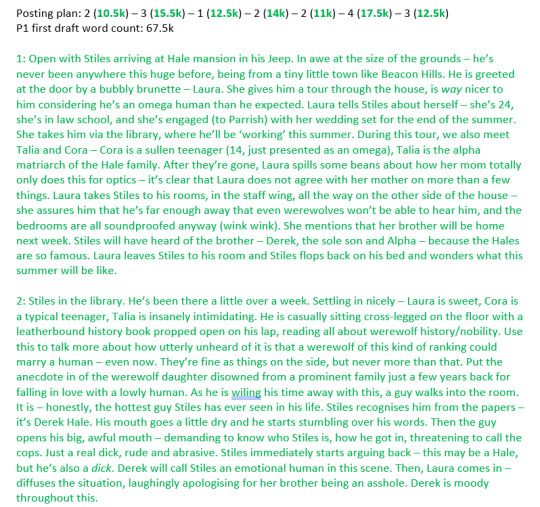
2. First draft. Put together a very messy first draft following the outline closely. This is very bare bones, really just fleshing each scene out into a cohesive sequence with rudimental dialogue. As part of this, I will also add bullet points under each scene for any notes I want to remember when I come back around for the second draft.
3. Second draft. This is a full re-write, in that I have two separate documents that I half-screen so that I can re-type the entire fic into the v2 document. The focus here is on developing out the prose and amending per any notes.
4. Third draft. Another re-write, but all just in the v2 document. This is to make sure everything flows correctly, reads well, and feels in character for the fic.
5. Typo edit. I will copy/paste the whole one-shot or chapter into an AO3 draft so I can view the text on a different screen, and then I will run through it for typos. Sometimes I catch areas that I want to re-write slightly, but the main focus is definitely catching typos.
6. Post! 🎉
For long fics, I get the full first draft written out before I post anything, and then I complete steps 3-5 for each chapter the week that I post it - which is why updates can sometimes take longer than my weekly target, if I'm particularly busy/behind/in a bit of a block that week.
I hope this answered your question sufficiently! 😊
10 notes
·
View notes
Text
My Dearest looked at Scent of Time and said "hold my beer." This is honestly how you show so much in so little.
We finally get a proper flashback as to how Ryang Eum came to be with Jang Hyun and it's a doozy. Because RE was being kept (yes, the way it sounds) as a child (!!!) by some psycho noble. And said noble got jealous of attention from someone else so was branding a small kid (!!) and we see teen Jang Hyun, a fellow servant there.
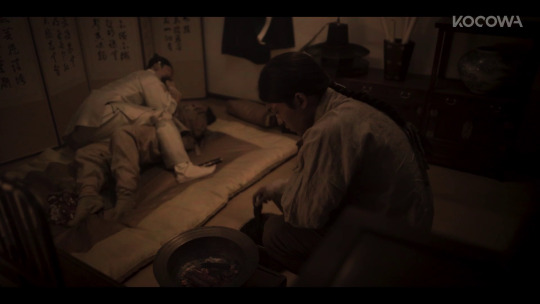
The way he asks this shows what this household is like in one short sentence - that cruelty and insanity are just routine.
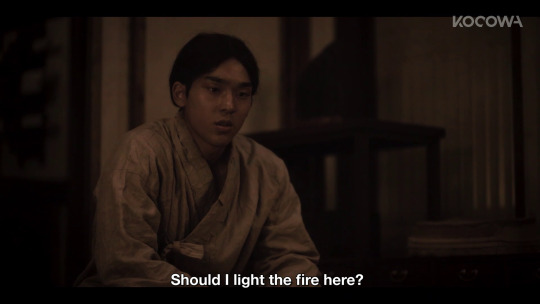
And then as the master keeps torturing his small child abuse victim, something in JH snaps and without any warning, and completely calmly, he smashes the man's head in. I cheered.
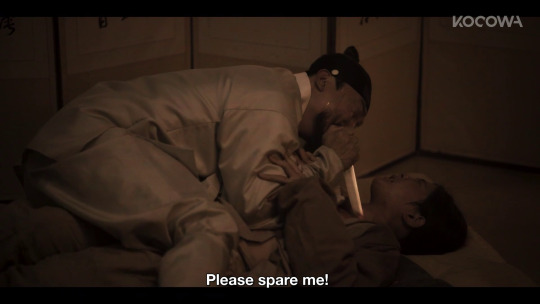
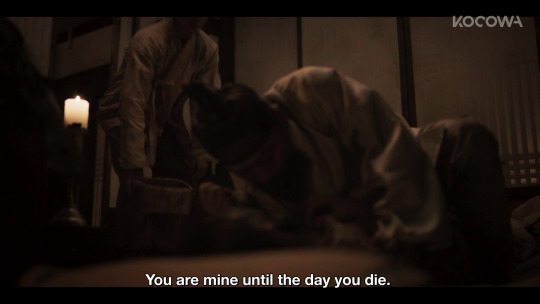

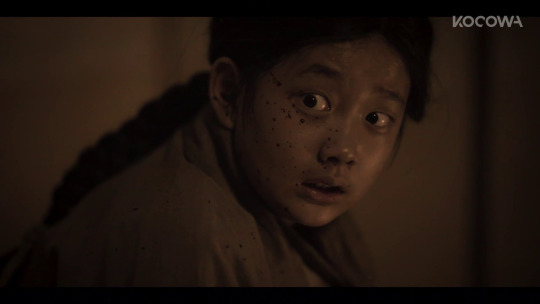


No wonder RE is forever JH's - he saved him from hell, the first time anyone did. And this sequence is so telling about so many things and the basics of JH's character are already there - even here, JH offers RE a choice, even here he's calm and competent under pressure and has a plan and he is someone who is patient but then whatever arbitrary line is crossed and he will just do anything to take the offender(s) down - the teen who likely murders their master for abusing his slave (if he's caught, a horrifying fate awaits), is the man who hunted and killed a troop that murdered the grandpa who sheltered him in his house, the man who tracked GC alone to that island while sick with the freaking plague etc etc. He can be teen or adult, poor and powerless or wealthy and powerful, but there is a core of pure absolutist steel in him.
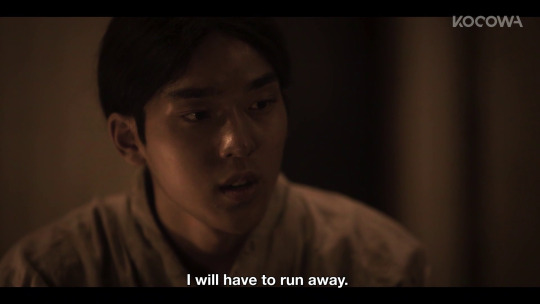

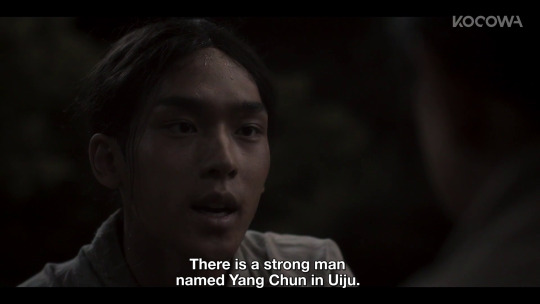

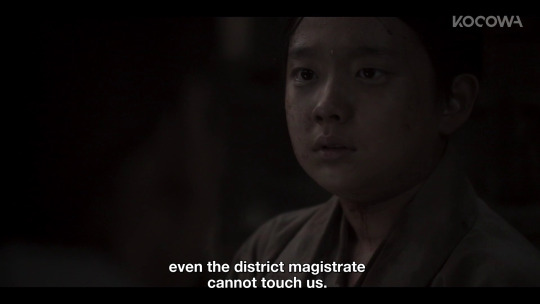
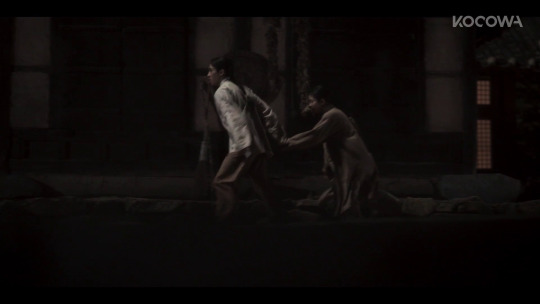
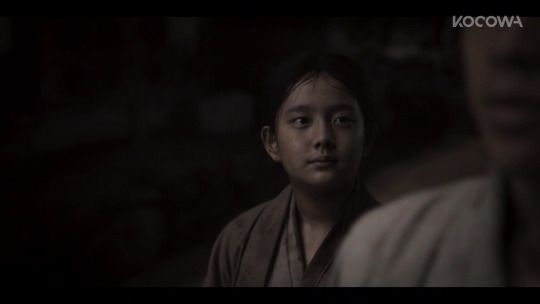
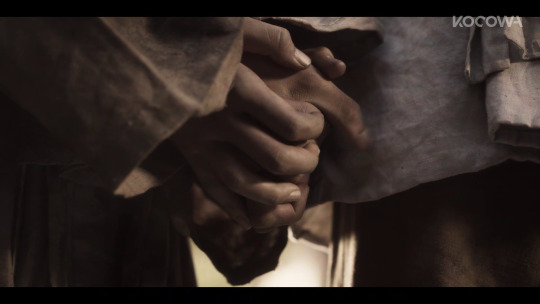
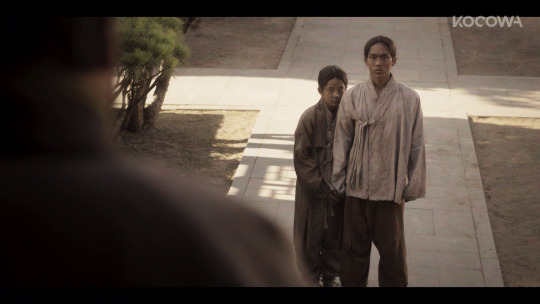
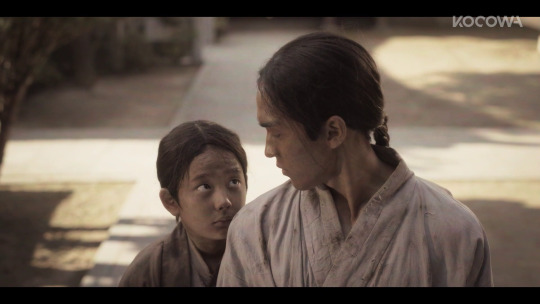
You know what I truly love? This flashback shows that despite his present silks and fans, there might not be a drop of noble blood in JH. And regardless of that, he's more competent and full of humanity than the bulk of nobles we meet. I love the narrative expectation that no, of course, he's a fancy noble because when we first meet him, this is what he presents as. And then.
Once again, it makes me think of this writer's previous Rebel. Where the King finally meets his foe Hong Gil Dong and is appalled when HGD says that no, he's not an illegitimate scion of a noble house or anything else approaching blue blood. He's a servant and son of servants, not a drop of blue blood. And the King refuses to believe it. Because he can believe a political challenger or an illegitimate son of aristocracy with a grudge against not being given the place he thinks the noble part of his blood entitles him to, but someone with no blue blood at all? He can't.
(It also makes me think of my favorite scene in cdrama Ever Night, where the Emperor and his court assume our ML on his revenge quest is the son of the general wrongfully murdered with his family and household, and ML reveals no, the general's son is long dead, he's the son of the porter and maid of that house who also got slaughtered in the household as part of general murder spree, not targets or anything but collateral damage. Why can't a servant's son seek revenge, he asks, and you feel the narrative stutter gloriously.)
Anyway, this drama is EVERYTHING!
64 notes
·
View notes
Text
Re Amor Fati: what the fuck was that. I have more things to say and more things to think about and no idea how to say them.
I feel like that was the first time mytharc really faltered. Not that it was impervious before, but something abt it wasn’t on target this time
David Duchovny I know you have things to say what did you mean. I’m going to need to have that percolate for a minute
Spoilers (for the mutuals) below:
Mulder always throws in with CSM when he’s at his lowest
The sequence with Diana and Mulder’s faux dream world makes much more sense if Diana and Mulder had been married in the past
Really interesting stuff with keys, and the truth, Mulder’s idea of deserving and fate. Ultimately where I think mytharc is faltering is that it can’t deliver anything concrete, but it’s trying to, and in doing so it’s becoming more aligned with the Syndicate. I have to rephrase that. Hmm. It’s like this with Mulder’s dream too, there are things there he didn’t want and things there that he did. And still the truth is Scully
I think the extraterrestrial vessel was both things at once — extraterrestrial and a fraud. The Syndicate’s guys and Mulder’s dream land talk about God’s plan, and playing God, and the idea that everything was orchestrated is not the truth.
Though maybe Scully’s thesis might say otherwise. Not in the orchestration, but in… where was it. “Although multidimensionality suggests infinite outcomes in an infinite number of universes, each universe can produce only one outcome.” Hmm. Fate, again.
“Hold on.” “Let go.” AGHHHHH Scully… CSM when I get you.
Oh. One more thing. I imagine: when Mulder was lying on that table and Scully was pleading with him, even while he had just been cured of his paracognitive ability he heard I love you as clear as any truth he’d ever known.
#the x files#fox mulder#amor fati#dana scully#the sixth extinction#cigarette smoking man#diana fowley#about that last point: I saw it. i watched what we all watched#maybe the fatal flaw here was mytharc trying to give real answers#I’m glad Mulder finally took a hint#txf spoilers#lim on txf
24 notes
·
View notes
Text

Resident Evil 6 is the worst RE game experience that I've ever had. Here are all the reasons that I believe this true based on my experience with the game.
There's a cutscene like once every two minute. It's excessive. This is a game, not a movie.
There are a lot of QTEs
The game doesn't look, feel or play like any kind of horror game.
The characters are so over the top in how they act that it's hard to take any of the seriously.
You have to zoom in to even shoot one of your guns, otherwise you'll just trigger melee attacks.
General aiming is so slow too. Like it's slow to aim and move from target to target and that is not good, especially for the amount of fast moving enemies in the game.
The sniper rifles have such and over the top and unrealistic amount of scope sway that it makes sniper rifles unusable.
The camera is god awful. Some characters have the camera set in a way to be over the left shoulder and yes, you can change it, but if you open a two person door or transition out of a cutscene, the camera will reset back to over the left shoulder which is annoying. There's so much camera shake when sprinting that it makes it hard to run in a straight line. The camera is also 98% responsible for the fact that an escape sequence in the 5th chapter of Chris's campaign is impossible as the camera keeps changing position and angle so frequently that I get stuck on walls and fail so much that I skipped this and never finished that campaign.
Not a fan of the skill point system because this system affects how much and what kind of ammo drops from enemies and that is annoying.
The escape sequences just suck in general. The one in chapter 5 of Chris's campaign is the worst but the snowmobile one in Jake & Sherry's campaign was also infuriating too. I don't know why these require so much precision to not fail but they do and it's stupid and I hate those sections.
I've played a total 6 RE games, seven if you count this one, and none of those games have come close to the piss poor experience of a game as RE6 has shown me to be, not even Revelations 2. I would definitely NOT recommend this game to anyone, even if you're a fan of the franchise.
#video games#resident evil#resident evil 6#capcom#the dragons speak#Resident Evil#Resident Evil 2#Resident Evil 3#Resident Evil 4#Resident Evil 5#Resident Evil 6#Resident Evil 7 Biohazard#Resident Evil 8#Resident Evil Village#Resident Evil Revelations#Resident Evil Revelations 2#Horror#Video Games#Zombies
23 notes
·
View notes
Text
You know what, I have had zero motivation for writing, BMC is eating my brain, and figuring out what to do with DLAU is killing me. So I say screw it, I'm sharing some of my plans.
Lester's Connection to Commodus- This whole plotline is why I dread STL, Save the Light (No, I did not get it from SU, I forgot that game even existed. It's not even the finalized title). I STILL don't know how exactly to handle it. Basically, I wanted Lester to have SOME personal stake when it came to the emperors, even more than Eliza. So I came up with this: back in ancient times, Lester had an ancestor named Belenus that wandered Greece and, against the advice of his father, went to Rome. Angry at how the gods had been changed, he tried and failed to speak against it, and was sentenced to be a gladiator. Praying to Apollo every day for release, Belenus eventually got good enough that Marcus Aurelius thought about letting him free.
Then. Y'know. He died and Commodus became emperor, and we know that Commodus fought gladiators all the time. Eventually Belenus had to fight Commodus, and was unsurprisingly killed. With his dying breath, he cursed Commodus, saying that the last face he would see would see would be his own. That is, Belenus'. A thousand years later, guess who looks nearly exact to Belenus and has become Commodus' big target, just as important as Apollo?
At first, Lester obviously CANNOT hope to fight Commodus. He tries this, he gets his ass kicked. Again while defending the Waystation and would've been decapitated by the emperor if not for Apollo managing to reveal his godly form. In BMR, Lester's toughened up and out for blood after Jason's death (yea, he goes from sweet to murderous after the yacht infiltration. Buckle up boi) and can actually manage Commodus better until he gets stabbed IN THE DAMN LIVER AND IS HOLDING ON TO HIS THREAD FOR DEAR LIFE FOR APOLLO'S SAKE. That fight is one I really look forward to.
Admittedly yeah, kinda needless plotline with Belenus but STILL. I'm figuring things out, so not everything is final.
The Scene We Don't Talk About- You know it. I just mentioned it. Again, not everything in this post is final, take this with a grain of salt.
Jason's death is going to be a huge moment development wise for Lester too. As I said, in the aftermath Lester will become hellbent on killing Caligula- whether or not he gets to, idk yet, but I have a funny idea for if Lester does:
Caligula: I'm still alive! (gets killed by Lester)
Lester: Not anymore, you're not.
Yep. Lester changes DRASTICALLY after the yacht stuff. But funny enough, the whole sequence is one of those that I don't need to change much but I also have to change a lot of it. It's still very early in planning, but the idea right now is Lester eventually has to race over to boat twelve in order to save them, fails, endures the heart stabbing thing by Apollo (they share wounds if they're serious enough!), see Jason die, try to attack Caligula, and end up nearly dying fron pandai arrows to save Piper and Apollo. Lester's last conscious words to Apollo after three arrows in back and being drifted to safety by Tempest are: "You would've done it too."
Apollo's changing a bit, and Lester sees that. He's trying to help that change along the best he can and support Apollo after such a horrible event.
The Final Battle For Delphi: Apollo and Lester VS Python- Ohhh man. At first when making DLAU, I figured that I'd omit this as I didn't think I could fit Lester in the fight. But after careful planning, I realized I possibly could- but maaaan, it wasn't going to end well. Lester simply isn't built the same as Apollo by this point (he has his glowy gold eyes back by now! In Lester's body!!) and is reduced to a bloody, broken mess once we get to the part with Chaos. He fights hard beforehand, but Python is just WAY too much for him, plus, y'know, they're in a volcanic atmosphere or something?! (I need to re-read ToA soon, goodness.)
Of course, Apollo takes a hell of a beating too, but he's not the one on death's doorstep. As he's turning back into his golden godly form, he's weeping and DESPERATELY trying to heal Lester. Of course, because happy ending, Lester does survive by the skin of his teeth thanks to what healing Apollo could manage, though was hospitalized for a while. He later reunites with his demigod pals and shares a happy cry with Apollo once they see each other.
The ending will be much of the same as in canon ToA, but it ends with Lester finally going back to his parents, his family, and embracing his quirks about himself. The message from the ending is one that I think is too relevant to not share now, given what's happened.
Lester breaks the fourth wall a bit, telling the reader that everything that happened was indeed true. He reflects a bit on the insane adventure he had to go through to get a second shot at life, and tells us not to squander ours, since we're not as lucky to be given two chances- we get one, and that's final. A few words from him about accepting and loving yourself, stuff he wished he had before, and basically tells us to not be afraid to be ourselves and stand up for what we believe in, that no evil will persevere forever, and that ANYONE can make a difference. After all, without him, Apollo couldn't have made it back to Olympus.
And of course, his eternal words of wisdom that to this day I am so damn proud over: "Hope to see the sun rise."
There we go! There's just a few. If you're interested to hear about my other plans for scenes I'll change or add, don't be shy and ask!
#THIS HAS BEEN IN MY DRAFTS SINCE JUNE HOLY HELL!#astrid speaks#trials of apollo#double lester au#lesterverse#toa#fan au#alternate universe
6 notes
·
View notes
Text
youtube
To add to yesterday’s observations about Will and how his feelings for Mike are being hammered home, there’s an insane sequence in the VR game - Chapter 4, the good stuff is from 50:00 onwards. To put it concisely: Vecna tauntingly asks Will how to get to each of his friends, then tries to get into each of their heads by targeting their weaknesses. He uses Dustin’s friendship insecurity, but Dustin ignores him because he’s watching TV lmao. He uses Lucas’s desire to succeed, and tries to tell him that his friends are holding him back. However, Lucas is on a drive-in movie date with Max. he uses Mike’s guilt over losing El at the end of s1, and Mike doesn’t even seem to register Vecna’s presence in his mind. Why? Bc he’s too busy playing D&D with the boys, trying to get his Nana impression on-point. Two dice are rolled, one red and one rainbow, and those visually wipe away the Vecna part.
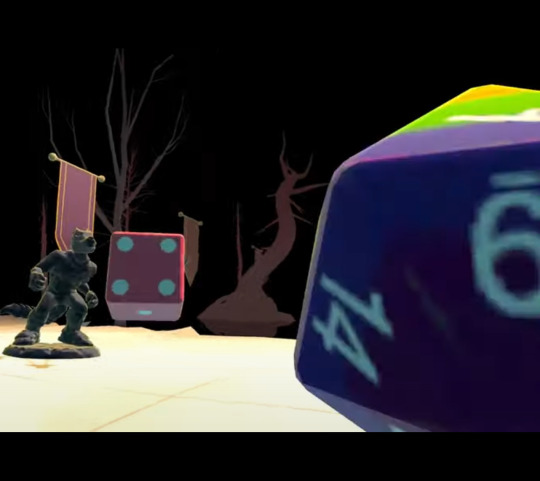
Vecna then returns to taunting Will, saying awful things about how he’s alone, his friends hate him, he’s going to rip him apart. Will’s nose starts bleeding heavily. Mike? Mike springs into action, grabs Nancy’s old white shirt, and physically wipes the blood off, getting super close to Will. His actions and words contradict what Will is being told by Vecna in that moment
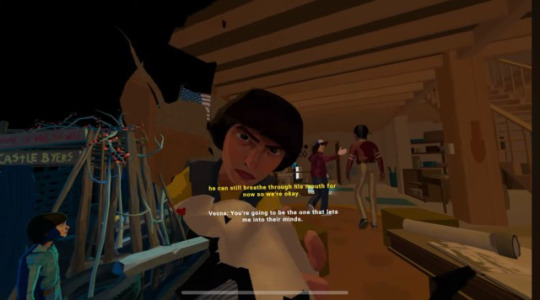
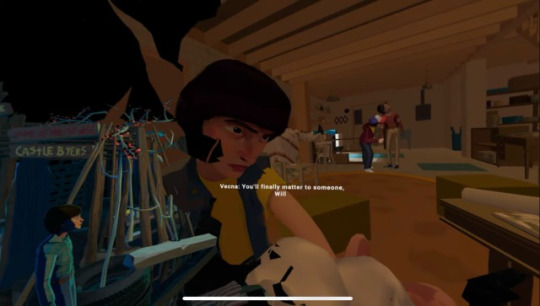
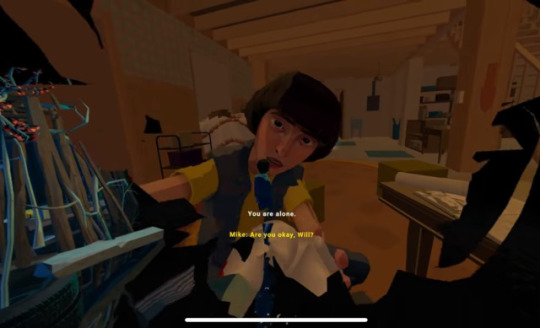
I want to note something I haven’t personally seen observed. In this play through, anyway, it goes Dustin, Lucas -> Mike. Before Lucas and Mike, Vecna asks mockingly how to get into their minds. The nosebleed happens right after he tries and fails to get to Mike. We’re then treated to a full 90 seconds of Mike getting right up in Will’s face, tenderly wiping his face clean and asking if he’s okay, serving as the ‘light’, to quote Max, that drags Will from the darkness that is Vecna, that disproves everything Vecna says.
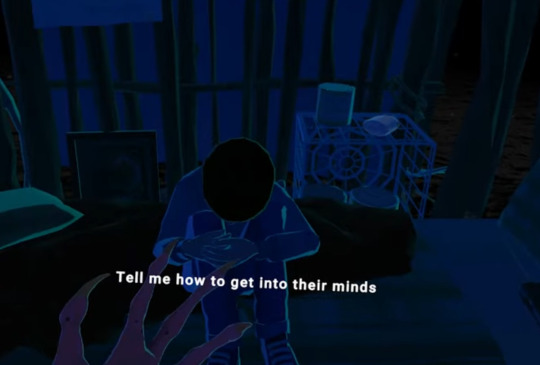
Is the implication that Vecna uses those tactics because that’s what Will thinks his friends’ big Achilles Heels are? What does that say for Mileven? I’d love insight from someone who’s played it.
Oh, and Mileven was low-key/high-key shaded in the Elmax section.


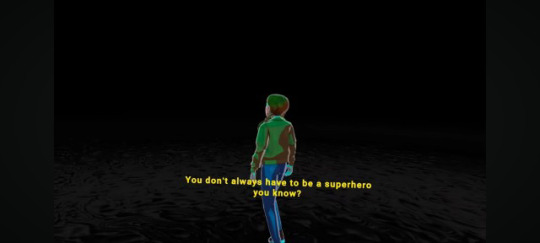
@will80sbyers has posts with screenshots of the full quotes.
(X, Y)
It’s very interesting that mileven is barely an afterthought, and treated very coldly and impersonally. To get to Mike, Vecna says, and I quote “more of that game. He’s distracted. You’ll never find her, Mike. The greatest person you’ve known forever is gone because you didn’t try harder. And now you’ll never know what could have been-” only for it to cut to Mike still talking about the particulars of his Nana impression. ‘Greatest person’, ‘cool’, ‘different’, ‘amazing’, only for any guilt re: her to not move him at all. Did I mention the consultant was Paul Dichter, story editor on 108 and every s2 and 3 ep, and main writer of Will the Wise and Dear Billy?

Prev post
#byler#stranger things virtual reality#stranger things vr#el and mike#mike wheeler#will byers#el hopper#Elmax
29 notes
·
View notes
Note
for the ask game: ratthi murderbotdiaries?
Send Me a Character
Oh, Ratthi, my beloved...🥰
First impression
Like a lot of us, I only had eyes for Murderbot the first time I read ASR---the human team absolutely got shoved to my mental backburner while I was busy relating to MB. In the five seconds I did spend thinking about Ratthi, it was mostly in a "oh, so this is going to be the problem child, huh?" way when he almost walked outside into the worm's mouth.
Impression now
I love him, your honor.
But also, he is an all-around delightful human being. There's a kindness and an earnestness to his character that is just so endearing you can't help but like him, especially when you layer in the fact that he's excellent at his job, great at adapting to high-pressure situations on the fly, and has the people skills to successfully navigate the absolutely wild interpersonal interactions that the series keeps throwing at him.
Favorite moment
That whole sequence in Fugitive Telemetry where he and Gurathin drop everything to help Murderbot do some light breaking and entering. It feels like the equivalent of an errand hang-out, but if your bestie spends its spare time solving murders rather than picking up dry cleaning and going to Target. I love the implication that this is just what they do now, once Murderbot has settled into the group. Friends help friends with projects, right? So, obviously, Ratthi is going to help in whatever way he can.
Idea for a story
I kind of want to do more of his PoV for various scenes throughout the series. He's present for so many of the juiciest scenes---there's a lot to work with!
Also, it might be fun to do something with his friendship with Arada and Overse, perhaps with some backstory on their first meetings and how they moved from colleagues to besties.
Unpopular opinion
In all honesty, I don't feel like there's too much pressure re: popular vs. unpopular opinions in the Murderbot corner of the internet. The only thing that comes to mind with Ratthi is that I think we tend to...soften him a little too much sometimes. There's a tendency to focus mostly on his skill as a people person or a friendly face, not necessarily on the fact that if he wasn't so good at his actual job, he probably wouldn't be on Mensah's team. We see him tackle gory jobs like cleaning up the battle aftermath on ART in Network Effect, we see him jump into helping with medical emergencies, and in Fugitive Telemetry, he immediately identifies that "someone was dead here" when they come upon the scene of the murder because the physical signs are obvious to a biologist. As far as the humans of the series go, Ratthi is very capable!
Favorite relationship
Aside from the obvious friendship with Murderbot itself, I really do love that he's best friends with Arada and Overse. I love that these three stuck together for the next survey to follow the disastrous events of ASR. I love that their friendship is so obvious and loud that even Book One Murderbot could immediately point it out. I just really like seeing healthy platonic friendships (especially ones that coexist with and do not compete against healthy romantic ones involving some of the same characters), okay?
Favorite headcanon
The infamous "Who's this?" line from ASR was a full-on my-brain-is-short-circuiting-and-my-mouth-got-ahead-of-my-mind moment, not necessarily an ah-yes-a-stranger-to-be-introduced moment.
23 notes
·
View notes